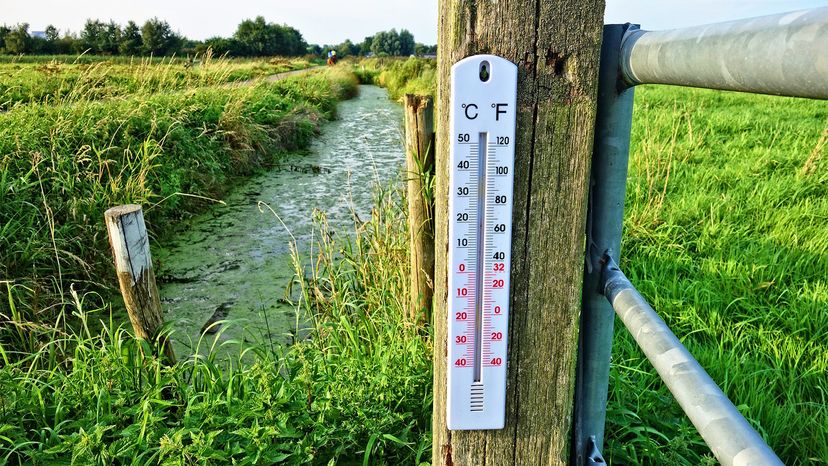
If you're an American and you've ever had a conversation with someone from another country about the weather, you've probably been a little confused when he or she says that the afternoon temperature is a nice 21 degrees. To you, that might sound like a chilly winter day, but to them, it's a pleasantly warm springtime temperature.
That's because virtually every other country in the rest of the world uses the Celsius temperature scale, part of the metric system, which denotes the temperature at which water freezes as 0 degrees, and the temperature at which it boils as 100 degrees. But the U.S. and a few other holdouts – the Cayman Islands, the Bahamas, Belize and Palau – cling to the Fahrenheit scale, in which water freezes at 32 degrees and boils at 212 degrees. That means that the 21 degrees C temperature that we previously mentioned is the equivalent of a balmy 70 degrees F in the U.S.
Advertisement
The persistence of Fahrenheit is one of those puzzling American idiosyncrasies, the equivalent of how the U.S. uses the word soccer to describe what the rest of the planet calls football. So why is it that the U.S. uses a different temperature scale, and why doesn't it switch to be consistent with the rest of the world? There doesn't seem to be a logical answer, except perhaps inertia. Americans generally loathe the metric system – this 2015 poll found that just 21 percent of the public favored converting to metric measures, while 64 percent were opposed.
It might make more sense if Fahrenheit was old-school and Celsius was a modern upstart, sort of the New Coke of temperature. But in reality, they were created only about two decades part. Fahrenheit was created by its namesake, a German scientist named Daniel Gabriel Fahrenheit, who in the early 1700s was the first to design alcohol and mercury thermometers that were both precise and consistent, so that any two of his instruments would register the same temperature reading in a given place at a given moment. "His great mechanical skill in working glass enabled him to carry out his designs," as Henry Carrington Bolton explained in his 1900 book, "Evolution of the Thermometer, 1592-1743."
Advertisement

